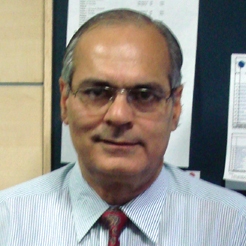
In an interview with tele.net, Anil Tandan, Chief Technology Officer, Idea Cellular, discuss the key trends, future opportunities and investment requirements in the telecom infrastructure space…
What are the key trends in the telecom infrastructure industry?
As far as passive infrastructure is concerned, more infrastructure companies coming into the market is unlikely in my view. The future trend will be of more rollouts in rural areas, especially for 2G, while for 3G, rollouts would be seen in urban India. Intra-circle roaming (ICR) has gained momentum over the past one year. As this model is working well and has also led to reduced costs, this trend is expected to strengthen and we will see more of ICR. Tower build-out is likely to slow down with most of the towers coming in on a shared or ICR basis. There would not be much growth in passive infrastructure in terms of tenancies and new towers. The rate of growth is going to slow down considerably.
Growth in the active infrastructure segment will be primarily driven by 3G services. Depending on the uptake of 3G and given that a certain amount of 2G capacity will also belong to 3G, the capacity requirement in 2G is likely to decrease considerably. Especially in towns where 3G will be launched, capacity enhancements are more probable for 3G. So 2G will now be restricted to rural areas or regions where one expects to expand coverage. The boundaries of cities are expanding with commercial complexes coming up around Delhi, Mumbai, etc.; these are the areas where we can see 2G network rollouts.
What opportunities are likely to emerge with 3G and BWA?
Nothing much would change with 3G coming in. Typically, 3G will also start from the 2G sites. So, we will see incremental revenues coming from the existing sites. The number of sites would not change much. Also, going forward, operators would be more interested in towers that can have both 2G and 3G co-located. The incremental sites specific to 3G will be much less. Any new sites that come up will generally be for both 2G and 3G.
How is the competitive landscape of this sector likely to evolve?
As far as the competitive space is concerned, there are not many chances of new companies coming into the telecom infrastructure sector. The scope for consolidation lies primarily with the smaller companies. This is a business where economies of scale matter. Companies that have economies of scale will be able to function well. Smaller companies with a fewer number of towers could look at consolidation.
What is the current status of telecom infrastructure in the rural areas?
Setting up infrastructure in the rural areas is no doubt more expensive. But all the leading operators like Bharti airtel, Vodafone Essar and Idea Cellular are rolling out services in these areas and more and more infrastructure is coming up. Going forward, there will be an increased trend of sharing infrastructure or adopting the ICR mode. The entire infrastructure coming up in rural areas is generally on a shared basis.
In states like Punjab and Haryana, India has already reached a telecom coverage level of 97-98 per cent. It is the larger states like Madhya Pradesh and Maharashtra where the rural coverage is still low. A major concern in rural areas is power; most of these sites are running on diesel and that considerably increases costs.
What are the supporting infrastructure requirements of the telecom sector? How are these likely to evolve with the launch of new technologies?
Basic supporting infrastructure required for telecom is power. The second is easier and standardised municipal laws for putting up a site. It is becoming extremely difficult to get municipal clearances for new sites. Support from the defence services is another issue. In all the towns we receive complaints of poor coverage from the cantonment areas. On our end, we have pulled up the quality of service but the cantonments should also give permission for setting up sites in those areas. Creative subsidy should be given for choosing solar panels and for the use of non-conventional sources of energy.